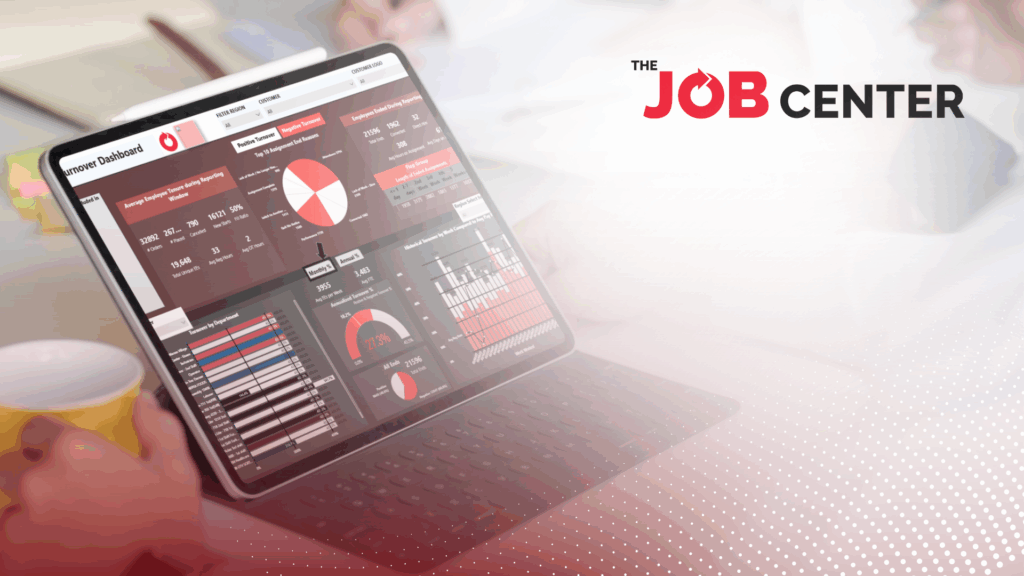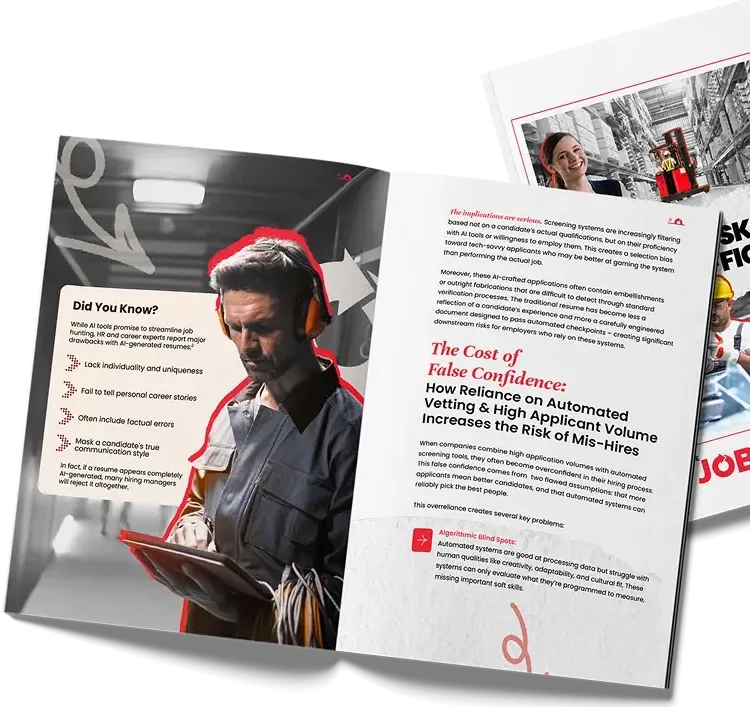How to Retain Top Performers in High-Turnover Roles Without Breaking the Budget

Do you want to retain top talent in high-turnover roles?
Knowing that people prioritize compensation when taking a job, it’s easy to think that offering higher salaries will solve the problem. However, this is not always the case. There’s a reason people leave high-turnover positions, and there are various strategies you can adopt to increase retention—without breaking the bank.
Why Do Workers Leave High-Turnover Jobs?
When given the opportunity, many employees would leave their jobs to receive a higher salary. This is something we can expect. After all, pay is still one of the primary factors for employee retention.¹
Besides being a significant motivator to allow one to continue a standard of living, it makes employees feel valued for their service and contributions, demonstrating a company’s efforts to show gratitude and appreciation.
However, money is not everything. According to a study by SHRM, 32.4 percent of employees would leave a toxic and negative work environment.² Other factors include poor leadership, dissatisfaction with a manager or supervisor, and poor work-life balance. The same study shows that surprisingly, pay only ranked sixth.
This shows that job satisfaction is an important factor that doesn’t always revolve around money. If you want to retain talent, it will take more than just offering competitive salaries and benefits. On the bright side, these employee retention strategies don’t need to cost much.
9 Cost-Effective Retention Strategies to Retain Top Talent in High Turnover Roles
Employee engagement starts with you. More than just offering competitive compensation packages, you will need to find creative ways to retain employees, ensuring they remain engaged and feel valued throughout their stay with you. Here’s how:
1. Begin Talent Retention in Recruitment
Even before the onboarding process, consider how employees will perform and collaborate with your entire organization. Identify what aspects of your workplace culture resonate well with them and emphasize that. Are they collaborative? Do they prefer working with a team or doing things solo? Are they open to longer hours and busy periods?
These are just some situations that will help you judge whether a candidate will have a promising career with you. Make sure that their values, practices, and attitudes align with your company.
2. Identify Each Candidate’s “Turnover Rate”
People leave jobs for many reasons. It could be as simple as finding better opportunities. But if your candidate seems like a potential job-hopper, you might not want to put all your eggs in their basket. Be sure to ask why they had to leave their previous companies. Look for signs that might show negative patterns like:
- Lack of team camaraderie
- Inability to learn and adapt
- Frequent conflicts with management or colleagues
- Consistently short job tenures
- Blaming previous employers for their struggles
- Vague explanations for employment gaps
Make sure to contact their references as well to get genuine feedback about their skills, personality, and values.
3. Offer Competitive Pay
It goes without saying that you should strive to provide competitive offers to your employees. If you’re paying well within market standards, your employees will certainly be more loyal than underpaid individuals.
Make sure to review salary benchmarks and compare your offers. Do a competitor scan and see what other companies are offering. You can also consider the standard of living in your area and add inflation into the mix. If you can’t provide the exact amount they are hoping for, these elements will help you develop a better payment structure to offer a balanced benefits package.
4. Adjust Your Benefits
Revisit your benefits package. While you may think you’re offering competitive benefits, consider offering what employees really want.
- Are they focused on professional development? Offer training programs and education reimbursements.
- Do they emphasize employee well-being? Look for potential wellness programs like gym memberships, HMO, mental health support, or flexible work setups.
- What about financial benefits? Consider stock options, retirement plans, or bonuses. If you can, consider a personalized employee package to increase job satisfaction and employee engagement.
5. Provide Professional Development Opportunities
Offering career development opportunities is a critical component for employees. In fact, according to LinkedIn, 94 percent of employees would stay longer if the company offered long-term career growth opportunities.³ This is because career opportunities not only ensure long-term professional growth but also provide a challenging and fulfilling career to employees.
Imagine a worker who does the same job every day for ten years without having a clear career path or being considered for promotion. It’s not something everyone would appreciate. Make sure to help employees grow and learn new things. You can do this through:
- Development programs
- Leadership training
- Upskilling and reskilling
- Mentorship
6. Consider Flexible Work Arrangements
Flexibility allows workers to have more responsibility and freedom with their time. Instead of setting a strict 8-5 day, you may consider a more flexible approach, like:
- Flexible hours – allow workers to work 1 hour early or late and adjust their clock-out depending on their start time.
- Compressed work schedule – compress your workweek into four 10-hour days instead of five 8-hour days.
- Shifting – you can introduce multiple shifts per day or split shifts to give longer breaks.
- Results-based work – if possible, you can remove shifts and schedules altogether and focus on output to give workers more autonomy.
7. Recognize Hard Work
Many workers leave their jobs because they feel unappreciated and undervalued. To improve retention rates, make sure to provide employee recognition programs and show appreciation for your employees’ contributions and efforts. This will help boost employee morale and create a more positive work culture.
If you can, conduct a periodical rewards program that highlights valuable contributions. You can also show appreciation through open communication. Talk about your employees’ achievements and hard work in meetings, or offer the occasional tap-on-the-back during a warm conversation over random desk encounters. Even simple gestures can go a long way in showing appreciation.
8. Ask Your Employees
Often, employees will not share what they’re going through, especially with their managers and supervisors. A few of the reasons are:
- Fear of negative consequences and unfavorable treatment.
- Lack of trust.
- The belief that it won’t make a difference, especially if previous encounters showed no change.
- Perceived lack of support and understanding.
The thing is, these don’t have to be true for your organizational culture. The key point is that employees perceive leaving differently, and some may not feel comfortable bringing it up with their managers.
Unfortunately, Gallup found out that 42 percent of employees who quit may have stayed if their manager or company had a conversation with them.⁴ Don’t wait until you’re in the exit interviews to ask employees why they left. Instead, have the right conversations early on.
Engage with your employees. Ask how they are doing and what challenges they have. If they have management concerns, provide avenues to safely voice their opinions and suggestions without fear of retaliation. Use this employee feedback to improve and adjust your employee retention strategy.
9. Utilize Data and AI
Boost your employee retention efforts with data and AI. Modern tech tools can analyze trends and identify why employees quit or who might be on track to leave. Every time you adjust your strategies, input and check the new data.
We already have vast amounts of data today, and partnering with a reputable provider will give you a competitive advantage in knowing when and why employees quit their jobs. This can significantly boost retention, help your business focus on improving employee retention rates, and create ways for employees to feel heard and valued.
Reduce turnover and retain employees with The Job Center.
You may have taken every step to reduce employee turnover, but it’s an inevitable part of talent management. What truly matters is having a plan in place to minimize its impact and maintain business continuity. Retaining talent requires swift action, and one of the best ways to safeguard productivity and morale is to have a reliable pool of workers ready to step in when needed.
That’s where we at The Job Center come in. We specialize in connecting businesses with skilled professionals in light industrial fields, currently servicing over 24 locations in 11 states. If you need fast and effective staffing solutions, contact your local center!
References
- Sorn, Meng et al. “The Effectiveness of Compensation in Maintaining Employee Retention.” SCRIP, Jul 2023, https://www.scirp.org/journal/paperinformation?paperid=126223#
- “Why Employees Leave and Why They Stay.” SHRM, 14 Nov. 2024, https://www.shrm.org/executive-network/insights/future-of-talent-retention-report-why-employees-leave
- “2018 Workplace Learning Report.” LinkedIn, 2018, https://learning.linkedin.com/resources/workplace-learning-report-2018
- Tatel, Corey and Wigert, Ben. “42% of Employee Turnover Is Preventable but Often Ignored.” Gallup, 10 Jul. 2024, https://www.gallup.com/workplace/646538/employee-turnover-preventable-often-ignored.aspx

About
James Oden
Other articles





